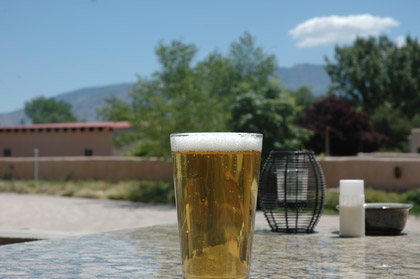
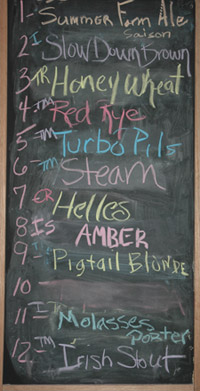 When we started The Session in March I was hoping each monthly host would not feel constrained to make the theme a particular beer style, so kudos to Snekse for making the June theme Drink Local.
When we started The Session in March I was hoping each monthly host would not feel constrained to make the theme a particular beer style, so kudos to Snekse for making the June theme Drink Local.
If New Mexico has a state beer adjective it is hoppy, and the state beer style would be India Pale Ale. As I headed down the hill from my house to the Corrales Bistro Brewery for lunch, conversation with my friend Ron and a beer I was thinking “good day for an IPA.”
The temperature was nearing 80 – this is a great time of year in the Rio Grande Valley, with windy season mostly over and morning temperatures still in the 40s, lots of sun and afternoon highs looking at 90 – and I was looking forward to sitting out on the back deck with a clear view of the Sandia Mountains.
As I’ve written before, the most basic route to “downtown” Corrales takes me past the Milagro Winery, so you get a bonus picture of part of its vineyard. Mission grapes were first planted in Corrales in the 1880s, but most were gone by the 1930s. This vineyard was planted in 1985 with more traditional vinifera.
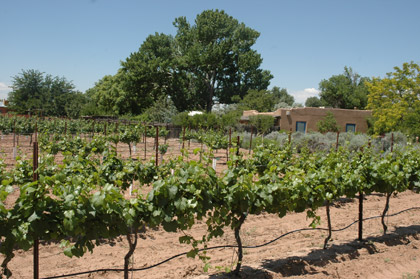
If you look at the menu board (above) you’ll note – as I did upon arriving – that no IPA is available. Sometimes the Bistro will have one from Turtle Mountain (up the hill in Rio Rancho), and sometimes from Chama River or Il Vicino (both in Albuquerque). No. 10 is blank because the keg of Turtle Mountain IPA ran dry.
The surprise was that the Bistro’s first brew was available. Understand that the brewery is not the top priority here – owner Fritz Allen wants to run a taproom featuring New Mexico beers, and you won’t find any other place with quite the cross-section of beers (all local) that the Bistro offers.
The brewery is a stitched together three-barrel system that doesn’t include a way – other than the help of nature – to control fermentation temperatures. That presents a brewing problem most places, but particularly in New Mexico. Thus, at the suggestion of Il Vicino brewer Brady McKeown (who lives in Corrales), Allen decided to started with a farmhouse ale brewed in the manner of a saison and with a yeast that likes higher temperatures.
He studied Phil Markowski’s Farmhouse Ales before tackling the project.
Simply called Summer Farm Ale, this beer is light in color and body and didn’t suffer in fermentation (no band aid!). It’s lightly spicy – the brewery serves it with a lime – though not brimming with yeast character.
The picture at the top is the other beer I drank, the Class VI Golden Lager from Chama River (simply called Helles on the board here). I’ve written about that beer before.
It went quite nicely with a pastrami and green chile sandwich wrapped into a tortilla.
I didn’t really mind the State Beer wasn’t available, but I sure as heck was going to have a basic local dish (the green chile, not the pastrami).
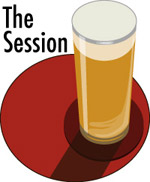 Snekse wraps up the fourth round of The Session, this one focusing on local beers.
Snekse wraps up the fourth round of The Session, this one focusing on local beers.
 When we started
When we started 
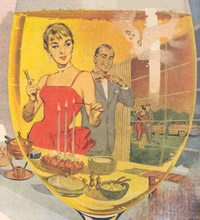 Here’s a multiple choice question:
Here’s a multiple choice question: Flying Dog Ales – which has more happening on the Internet than any other brewery I know of – has launched its own
Flying Dog Ales – which has more happening on the Internet than any other brewery I know of – has launched its own